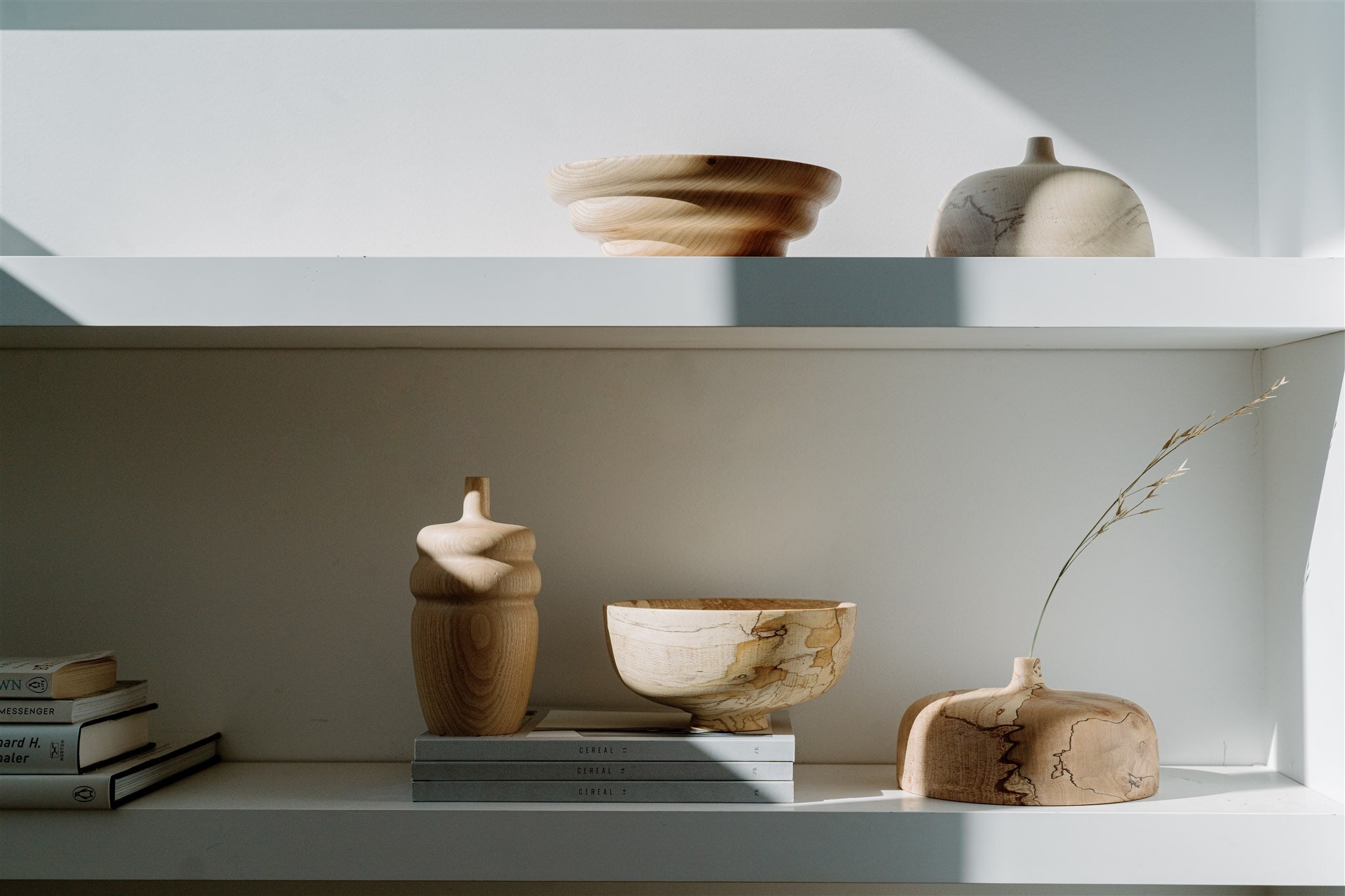August 3, 2021
 A collection of objects by Whirl & Whittle. Photo Courtesy of Whirl & Whittle
A collection of objects by Whirl & Whittle. Photo Courtesy of Whirl & WhittleCreative Humans: Say hello to Whirl & Whittle.
By Nabi Williams.
The Humanist introduces another member of its expanding community, Pooja Pawaskar from Whirl & Whittle. An artist and designer, Pawaskar specializes in creating beautiful wooden pieces such as vases, bowls, and ikebana pedestals––all with the aim of rewiring our attitudes towards flaws and imperfections. By using techniques inspired by the Japanese philosophy of wabi-sabi, such as kintsugi, Pawaskar encourages her audience to see flaws and imperfections not as negative qualities, but beautiful and unique assets.
Largely inspired by Jun'ichirō Tanizaki’s In Praise of Shadows, Pawaskar’s appreciation for handmade objects made with intention grew after reading Tanizaki’s work. It was after this revelation that Pooja Pawaskar pursued her calling of creating handmade objects.
Join us in getting to know Pooja Pawaskar, and what inspires her work for her business, Whirl & Whittle.
Company Profile
Whirl & Whittle is based on the philosophies of wabi-sabi and slow-living. Pooja designs wooden objects that appreciate the beauty of imperfection and impermanence —in today's ideals of beauty, the relentless pursuit of youth and flawlessness.
Whirl & Whittle is based on the philosophies of wabi-sabi and slow-living. Pooja designs wooden objects that appreciate the beauty of imperfection and impermanence —in today's ideals of beauty, the relentless pursuit of youth and flawlessness.
Wood is an ideal material for the designs, as no two pieces of wood are the same, and each piece will age uniquely and showcase distinctive features with wear.
Her formal education is in architecture and furniture design, a path inspired greatly by her grandfather, who made wooden pieces that were cast in metal and used in industrial factories in India. All of these elements have shaped her aesthetic sense and her approach to design.
Each Whirl & Whittle piece has a story behind it. Pooja usually starts with a story and then decides what wood to use and how she wants to work with it to tell that story.
What makes you get up and design/create every morning?
Is it the problem or the solution that fuels your design practice?
What’s your spirit material?
A design/art/architecture project that you always return to for inspiration?
Three words that describe your practice
How do you use design for good?
I have been a maker for as long as I can remember. I have a perpetual need to wake up and head straight to my studio to create something, anything. I usually start with a wood blank and challenge myself to create something unique every single day. It keeps me motivated and fuels my creativity. And once that thirst is satisfied, I allow myself to move on to the less exciting tasks.
What drives me is the need to learn and discover. I would not be able to do either without trying new things.
Is it the problem or the solution that fuels your design practice?
It's a problem that fuels my creative practice. Growing up, I always felt like I was not good enough, not beautiful enough, because I didn't fit the Eurocentric beauty standards.
Once I studied Wabi-sabi, I recognized it was more than just interiors and beautiful objects. It was a pearl of wisdom that could help us come to terms with our perceived shortcomings and make peace with our imperfections. I soon started making objects based on the knowledge acquired from wabi-sabi.
What’s your spirit material?
Wood is undoubtedly my spirit material. Wood comes with a history and has organic qualities, and I have always felt a draw to it. With wood, you can't rush things; you have to have a relationship with it, a dialogue with it. Sometimes you have to slow down and reflect before deciding on the next course of action. Wood adds limitations, and limitations make things interesting.
If I had to pick another material tomorrow, it would probably be stone. It brings similar qualities and presents similar challenges.
A design/art/architecture project that you always return to for inspiration?
I don't necessarily go back to the same project for inspiration, but I go back to the same artist. I love Ruth Duckworth's work. The movement and the lightness in her pieces intrigue me, and I always find peace and inspiration when studying them.
Three words that describe your practice
Acceptance. Delicate. Refined.What does the future of design look like to you?
I plan to create works that negotiate their position in the misty realm between art and design. Work that challenges its spectator to reevaluate their perceived notions about objects and their place in this world
How do you use design for good?
I design pieces that tell human stories: stories about impermanence, scarring, fleeting moments, and imperfections. I believe my work has the ability to assist people in coming to terms with these aspects of our existence.



